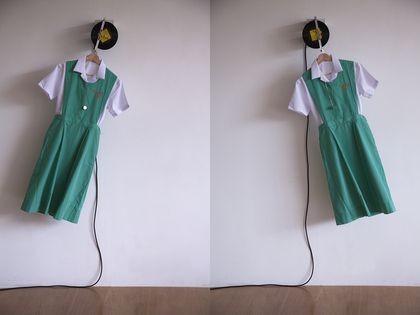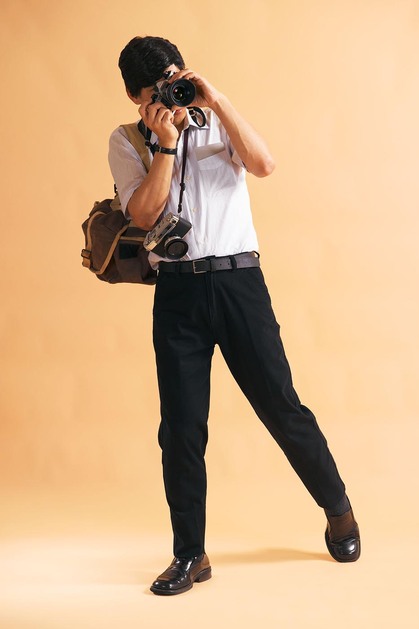-
From Current Issue
-
- Editor’s Letter Fire in the Heart
- Reviews I Gusti Ayu Kadek Murniasih
- Reviews 11th Seoul Mediacity Biennale: “One Escape at a Time”
- Dispatch Networked China
- One on One Monira Al Qadiri on Yukio Mishima
- Essays The rise of independent art spaces in pandemic-era Shanghai
- Features Tuan Andrew Nguyen
- Table of Contents
- Web Exclusives
- Archive
- Subscribe

R
E
V N
E
X
T
Installation view of LEUNG CHI WO’s “Something There and Never There” at Blindspot Gallery, Hong Kong, 2018. Courtesy the artist and Blindspot Gallery.
I grew up in Hong Kong. In my secondary school history textbook, there were only two paragraphs dedicated to the events of 1966 and 1967. The authors and my teacher discussed how the riots were triggered by an increase in the Star Ferry fares and briefly mentioned the Cultural Revolution that was beginning to rage in mainland China, but offered few details about the anti-colonial sentiments. Perhaps to spare us the gruesome details, they also barely mentioned the casualties caused by homemade bombs, or the shocking attack on radio host Lam Bun, who was doused with gasoline and then set alight; he died the next day in a hospital. Like many Hongkongers, I was much more familiar with, say, the Sarajevo Incident than this episode in our city’s history. It was not until last year, when I attended a screening of a documentary titled Vanished Archives (2017) that I learned how the riots were one of the significant instances of protest ever to break out in Hong Kong.
Artist Leung Chi Wo’s fascination with the 1967 riots can be traced back to when he was, as he put it, still in his mother’s womb. He was born in 1968, after the protests had died down. The artist’s father worked at a factory near the site of one of the first labor disputes, but there was little impact on his life except that he had to walk to work after the bus drivers went on strike. Half a century later, Leung has dedicated a series of artworks that invoke the riots, though he cites his absence from them: “It is an amazing fact that I was physically close to this historical moment but actually have no memory nor experience of it at all,” he wrote in the exhibition catalog of “Something There But Never There,” his solo presentation at Blindspot Gallery in Hong Kong.
Leung’s presentation on this important chapter of Hong Kong’s history comes at a time when the city is experiencing a subtler but no less consequential kind of political turbulence, resulting in parallels between the artworks and real-life occurrences. The week that Leung’s exhibition opened, young localist activist Edward Leung appeared before the court on rioting charges for being at the forefront of heated clashes that broke out over Chinese New Year in 2016, an outburst of pent-up discontent toward the government.
The similarities do not stop there. A Countess from Hong Kong (2016) features a school uniform of the prestigious all-girls Belilios Public School—where 14 students were arrested for blocking teachers from taking away an expelled leftist-sympathizing classmate—bringing to mind the recent suspension of two Baptist University students involved in a loud protest against a compulsory Mandarin test in January 2018. The uniform’s bright turquoise color is in nearly the exact same shade as political party Demosistō’s logo, and on the day I visited the gallery, the government had just barred the party’s candidate, 21-year-old Agnes Chow, from running in the legislature elections. The uniform, hoisted by a vinyl record of a song that was popular in 1967, swings like a pendulum while conjuring discomforting associations of a schoolgirl being hanged.
The “Extremely Recalcitrant” series show these two words engraved over the glass casing of various photographs related to the riots from 51 years ago. The title of the series is lifted from a comment made by Magistrate Enoch Light during the trial of the Belilios schoolgirls, as well as a reference to Susan Sontag’s essay collection On Photography (1977)—echoing a recent trial that I attended, where a judge accused three activists of being “very irresponsible” and part of an “unhealthy wind” of idealists that possess “arrogant, self-righteous thoughts.”
Other works highlight the artist’s process of coming to terms with feeling nostalgia for a world he never knew. In Photojournalist with Two Cameras (2010), Leung casts himself in the role of a character from a South China Morning Postphoto taken during the riots, focusing not on the picture’s subject—law enforcement and an arrestee—but a photographer lurking a good distance behind the action. Leung then imagines a backstory for the character, and first presented the work in a series with a poetic title: “He was lost yesterday and we found him today.” In “The Date Series” (2017), Leung revisits bombing sites and takes a black-and-white picture of the sky exactly 50 years later. With this almost religious act, the artist has embodied the title of his exhibition by becoming “something there and never there.” Yet there are also satirical undertones: the title of a photograph snapped in Repulse Bay, Some Life After Despondency (2016), is taken from The Economist and describes the state of the stock market after the riots, a nod to the city’s obsession with its financial status.
Central to Leung’s works is the notion of temporality: the relationship between then and now, and history’s tendency to move not linearly but in circular motion, rotating between war and peace, quiet and unrest, colonization and decolonization (and perhaps recolonization). In Frater (2015), a roll of black-and-white film showing plastic roses cycles round a sewing machine over the span of ten hours. It is not only a reference to the duration of his father’s workday in a factory and an allusion to the plastic flower production line so central to many a working class family’s income in that era, but also a reminder that everything eventually comes full circle, only to repeat itself endlessly.
Karen Cheung is the Hong Kong desk editor of ArtAsiaPacific.
Leung Chi Wo’s “Something There and Never There” is on view at Blindspot Gallery, Hong Kong, until March 10, 2018.
To read more of ArtAsiaPacific’s articles, visit our Digital Library.






